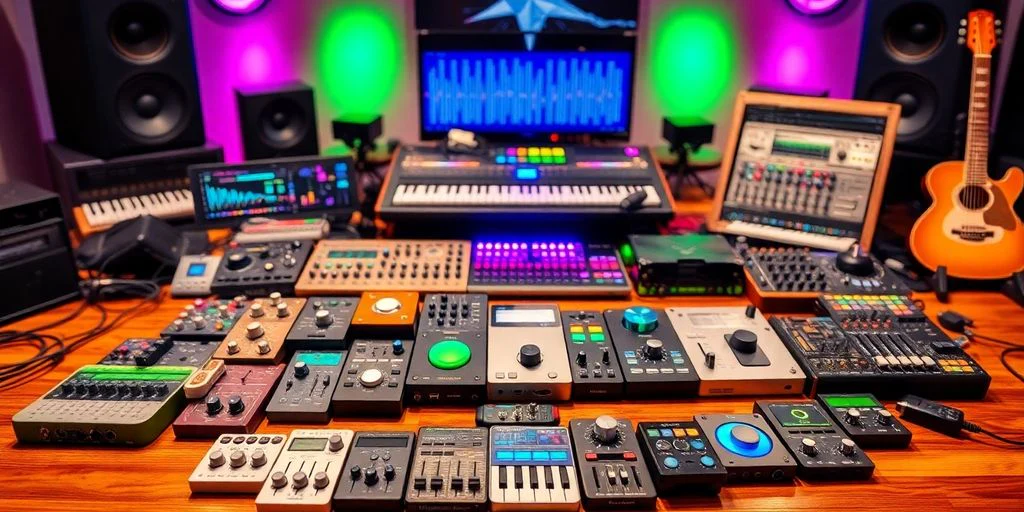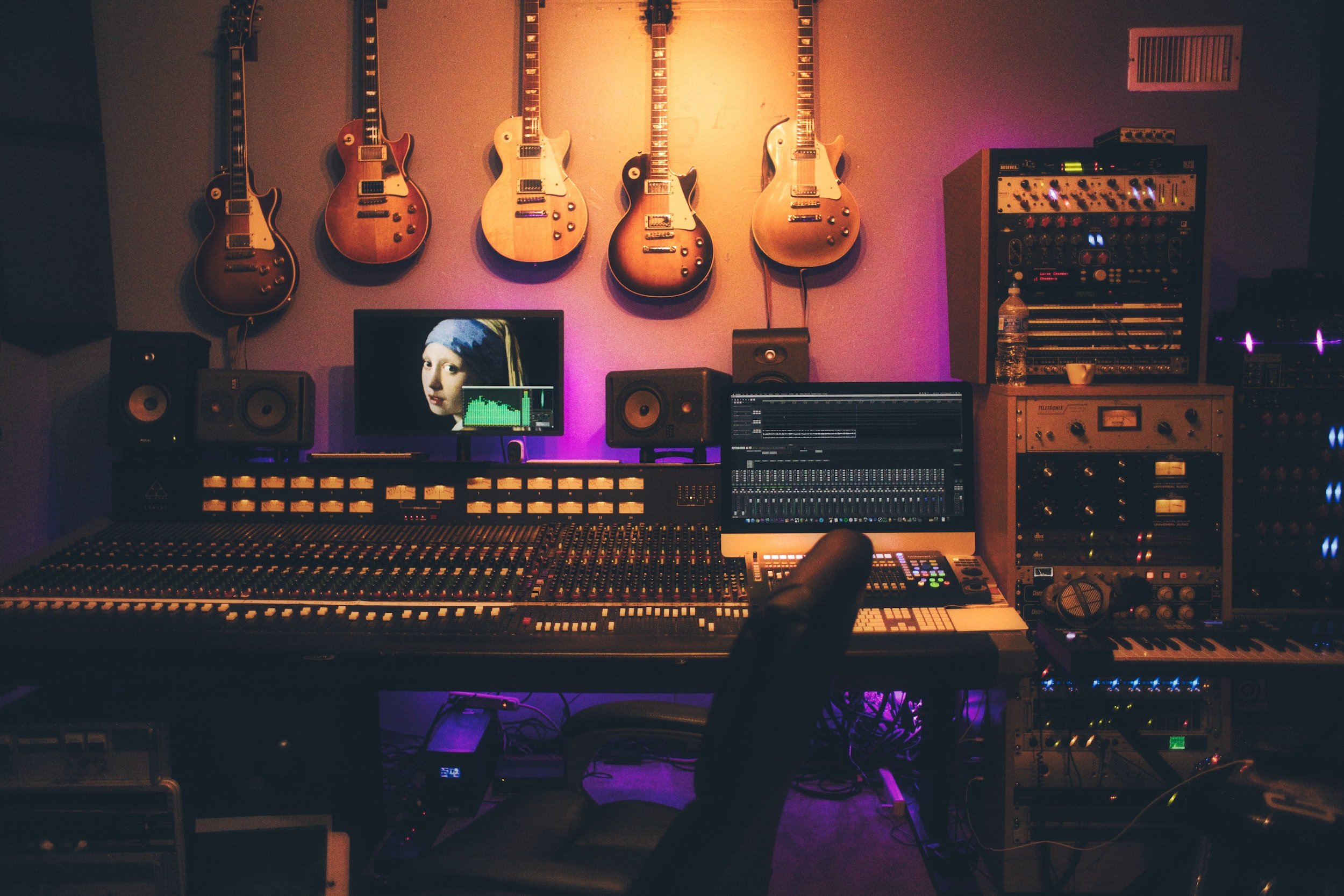MIDI (Musical Instrument Digital Interface) has been a cornerstone of music production since the 1980s, enabling musicians and producers to compose, arrange, and perform music with unprecedented flexibility. In today’s digital era, the creative use of MIDI FX (effects) is transforming how artists approach sound design, composition, and live performance. This blog explores the power of MIDI FX, offering practical techniques, inspiring examples, and resources to help you unlock new creative dimensions in your music.
What Are MIDI FX?
MIDI FX are tools and plugins that manipulate MIDI data in real-time, allowing you to shape, transform, and enhance your musical ideas before they reach your instruments or virtual instruments. Unlike audio effects, which process the sound after it’s been generated, MIDI FX work with the musical instructions—notes, velocity, pitch, timing, and more—giving you granular control over your creative output.
Common Types of MIDI FX:
- Arpeggiators
- Chord generators
- Scale quantizers
- MIDI modulation (LFO, velocity, pitch bend)
- MIDI plugins for randomization and humanization
How MIDI Works: The Backbone of Modern Production
MIDI operates by transmitting data messages that dictate actions like note pitch, velocity, and control changes. Each message carries specific information, such as when a note starts and stops, its duration, and how hard it is played. MIDI supports up to 16 channels per port, enabling complex setups with multiple instruments and layers.
Key MIDI Message Types:
- Note-On/Off
- Control Change (CC)
- Program Change
This architecture allows for intricate arrangements, real-time manipulation, and seamless synchronization between hardware and software instruments.
Why Use MIDI FX in Music Production?
MIDI FX offer several advantages that can elevate your production:
- Creative Experimentation: Test new ideas without destructive edits.
- Non-destructive Editing: Change parameters like pitch, rhythm, or velocity without re-recording.
- Enhanced Expression: Add human-like nuances and dynamic variations.
- Efficient Workflow: Quickly generate complex patterns, harmonies, or textures.
- Live Performance Power: Trigger, modulate, and improvise in real time.
Essential MIDI FX and How to Use Them
1. Arpeggiators
An arpeggiator automatically plays a sequence of notes in a specific pattern, turning simple chords into intricate melodic lines. You can adjust speed, octave range, and note order for diverse effects.
Creative Tips:
- Use arpeggiators to create evolving synth lines or rhythmic textures.
- Layer multiple arpeggiators for polyrhythmic complexity.
- Experiment with swing and gate settings for groove variations.
2. Chord Generators and Scale Quantizers
Chord generators turn single notes into full chords, while scale quantizers ensure your melodies stay in key.
Creative Tips:
- Use chord FX to quickly explore harmonic progressions.
- Combine with scale FX to experiment with modal or exotic scales.
3. MIDI Modulation
MIDI modulation adds movement and expression through LFOs, pitch bends, vibrato, and mod wheel automation.
Creative Tips:
- Automate filter sweeps or effects for evolving soundscapes.
- Use velocity and aftertouch for expressive, dynamic performances.
4. MIDI Plugins for Randomization and Humanization
Randomization plugins introduce subtle variations in timing, velocity, or pitch, making MIDI sequences feel more organic.
Creative Tips:
- Humanize drum patterns for a less robotic feel.
- Randomize note order or rhythm for generative music.
5. MIDI Automation
MIDI automation allows you to program changes in volume, panning, effects, and other parameters over time.
Creative Tips:
- Automate build-ups and breakdowns for dynamic arrangements.
- Control multiple parameters simultaneously for complex transitions.
Advanced MIDI FX Techniques
Custom Mappings and MIDI Scripting:
Assign MIDI controls to any parameter in your DAW or plugin, or use scripting for advanced control and generative processes.
Expressive Playing with MIDI Controllers:
Use pressure-sensitive pads, touch strips, or MPE (MIDI Polyphonic Expression) controllers for nuanced performances.
Beat Layering and Blending:
Layer multiple drum sounds and patterns to create depth and texture. Use timing offsets and effects like reverb or distortion for unique sonic results.
Embracing Variations and Automation:
Introduce variations and automate filter sweeps or volume changes to keep your music dynamic and engaging. Create multiple beat versions for different song sections.
Real-World Applications: MIDI FX in Action
Studio Production:
- Quickly sketch out song ideas with chord and arpeggiator FX.
- Use MIDI modulation to add movement to pads and leads.
- Automate FX for evolving arrangements.
Live Performance:
- Trigger loops, effects, and lighting via MIDI controllers.
- Improvise with arpeggiators and chord generators on stage.
- Synchronize multiple devices for seamless shows.
AI-Assisted Composition
Tools like Meta’s MusicGen can turn MIDI melodies into full songs in different genres, expanding creative possibilities with AI.
Step-by-Step: Transforming a Simple MIDI Note with FX
- Start with a Single Note:
Record or input a single MIDI note in your DAW. - Apply a Chord Generator:
Convert the note into a full chord. - Add an Arpeggiator:
Break the chord into a rhythmic sequence. - Modulate with LFO or Envelope:
Add movement to filter cutoff or pitch. - Automate Effects:
Program changes in reverb, delay, or panning for evolving sound. - Humanize and Randomize:
Introduce slight timing or velocity variations for realism.
See it in action:
Get CREATIVE with MIDI FX in LOGIC PRO! (YouTube)
Visual Inspiration
| Plugin/Tool | Type | Key Features |
|---|---|---|
| Ableton MIDI FX Rack | Multi-FX | Arpeggiator, chord, scale, more |
| Logic Pro MIDI FX | Multi-FX | Chord trigger, arpeggiator, mod |
| Cthulhu by Xfer | Chord/Arp | Chord memory, arpeggiator |
| Scaler 2 | Chord/Scale | Scale detection, chord sets |
| MIDI Shaper | Modulation | LFOs for MIDI control |
Tips for Unlocking Creativity with MIDI FX
- Experiment with Combinations: Stack multiple MIDI FX for unexpected results.
- Automate Everything: Use automation to evolve your FX over time.
- Embrace Randomness: Let randomization plugins inspire new ideas.
- Humanize Your Sequences: Subtle variations make MIDI feel alive.
- Learn Your Tools: Dive deep into your DAW’s MIDI FX and explore third-party plugins.
Conclusion
MIDI FX are more than just technical tools—they are creative catalysts that can transform your approach to music production. By mastering arpeggiators, chord generators, modulation, automation, and advanced MIDI techniques, you can unlock new realms of musical expression and innovation. Whether you’re producing in the studio or performing live, MIDI FX empower you to push boundaries and craft music that is dynamic, engaging, and uniquely yours.



